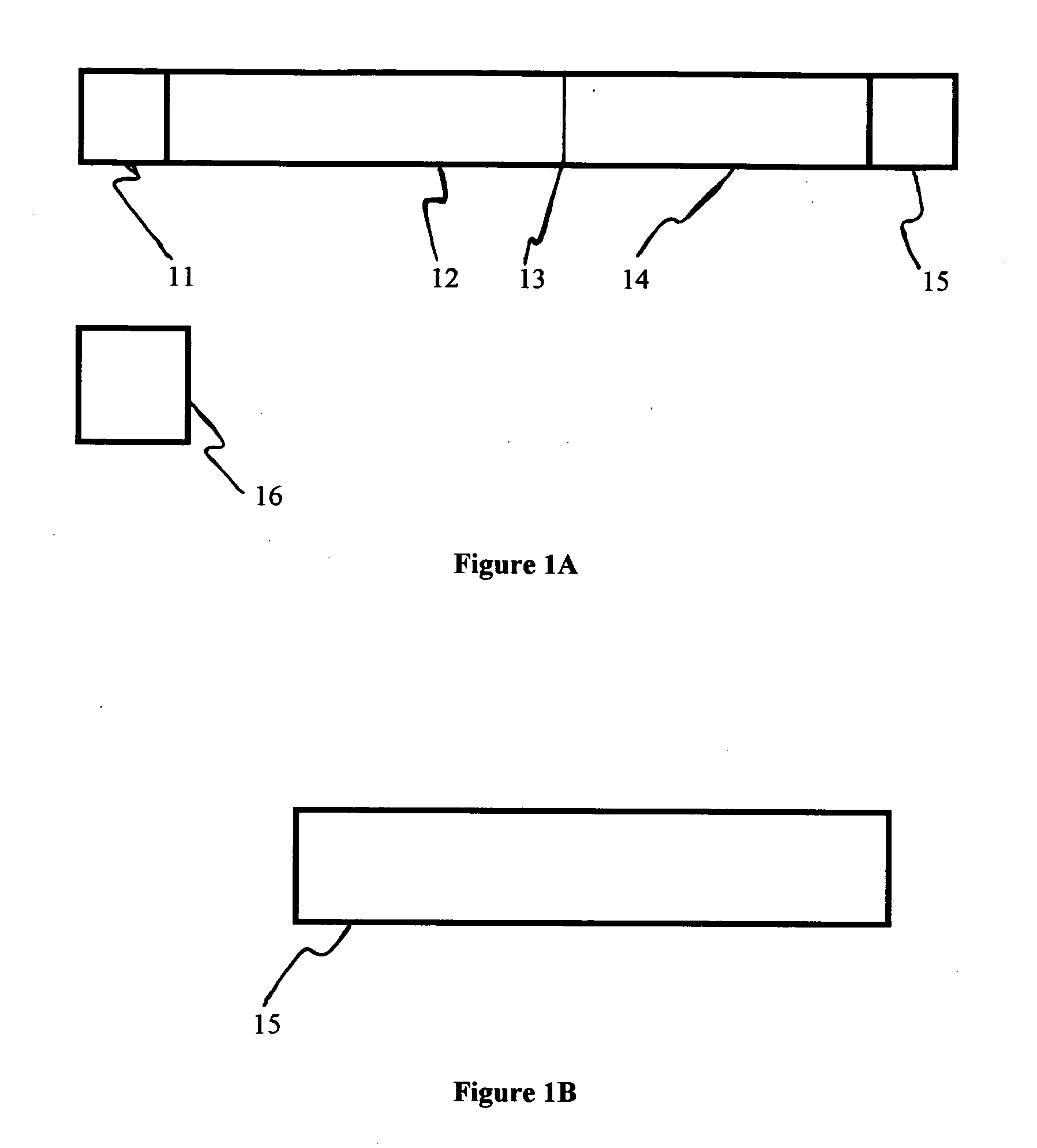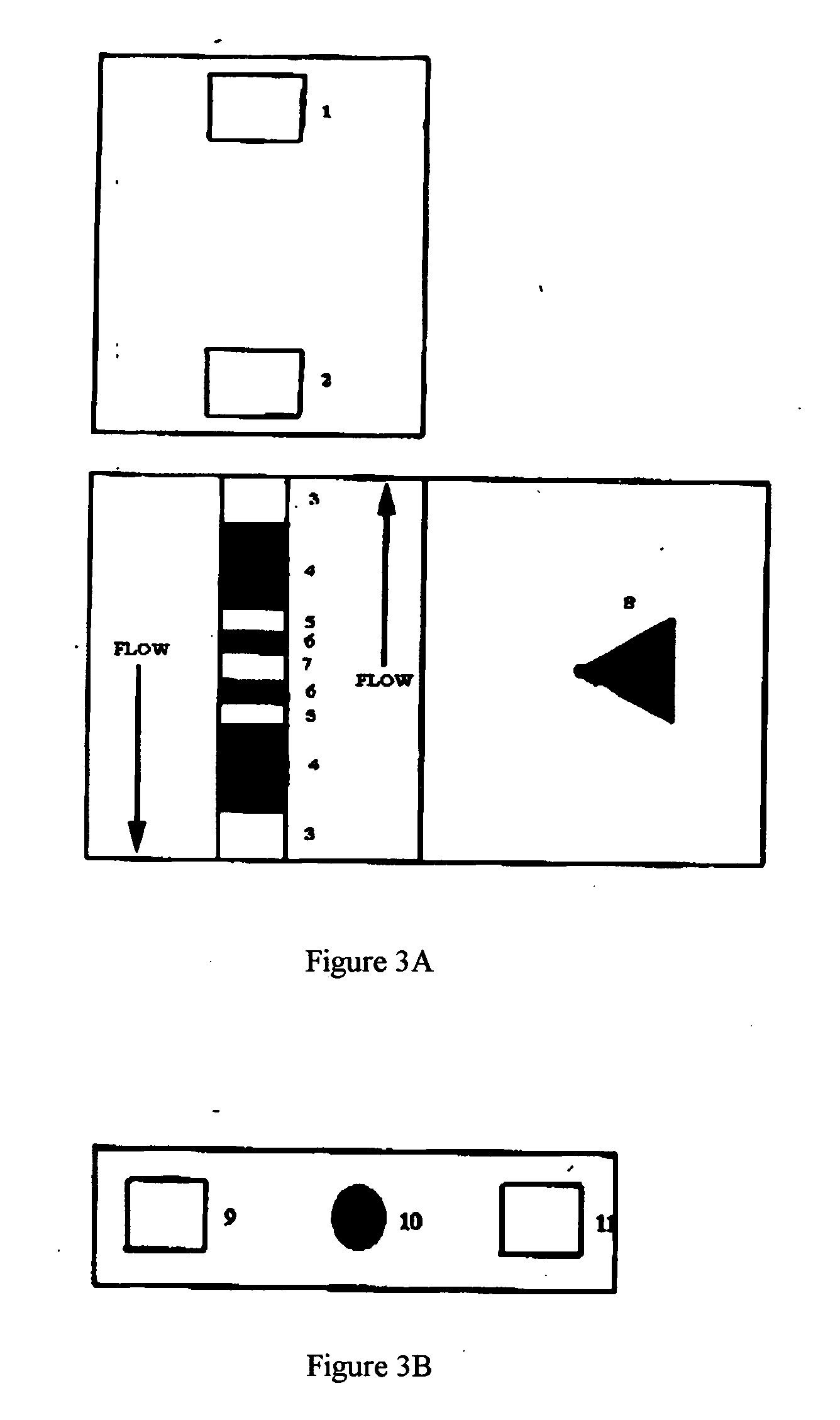Chromatographic exclusion agglutination assay and methods of use thereof
a technology of agglutination assay and chromatographic exclusion, which is applied in the field of agglutination assay, can solve the problems of lack of sensitivity, false positive, and especially prone to false positive in agglutination assays that utilize a dry porous strip
- Summary
- Abstract
- Description
- Claims
- Application Information
AI Technical Summary
Benefits of technology
Problems solved by technology
Method used
Image
Examples
example i
Detection of Staphylococcus aureus
[0127] This Example provides a device detection of methycillin resistant Staphylococcus aureaus (“MRSA”). Pastorex Staph Plus (Biorad, part #65356) was employed to demonstrate feasibility and utility of the present invention. As an experimental control, a slurry of MRSA was run on the slide agglutination assay per the manufacturer's instructions. Moderate agglutination was observed in the well containing the mixture of test latex and MRSA, and no agglutination was observed in the well containing a mixture of MRSA and the control latex.
[0128] To identify a suitable chromatographic media, the suspension of red latex test particle was applied to several types of media including nitrocellulose and porous polyethylene. A porous polyethylene membrane (Porex, part #181071) with suitable chromatographic properties was selected. When untreated particles were applied to this membrane, the pore space volume was uniformly filled with particles producing a dar...
example ii
Detection of Streptococcus agalactiae
[0131] This Example provides a device detection of Streptococcus agalactiae (“Strep A”). Construction of the agglutination separation strip:
Materials for Construction of the Agglutination Separation Strip:
[0132] Millipore nitrocellulose: length 18 millimeter, width 6 millimeter (Millipore, Inc., Part #PK002057; 100% nitrocellulose membrane) [0133] Bridge pads (Ahlstrom 1281; 90% cellulose fiber, 10% rayon with traces of polyacrylamide wet strength resin and polyacrylamide dry strength resin) [0134] Absorbent pad (Ahlstrom 939; 100% cellulose with traces of polymide wet strength resin) [0135] Lexan backing (Lexan #8010)
Materials for Construction of the Antibody Capture Strip: [0136] Millipore nitrocellulose: length 18 millimeter, width 6 millimeter (Millipore, Inc., Part #PK002057) [0137] Bridge pads (Ahlstrom 1281) [0138] Conjugate pads (Hollingsworth & Vose, H&V 7304 Nonwoven; polyester) [0139] Lexan backing (Lexan #8010)
Agglutination Pr...
experiment 2
Results (Experiment 2):
[0147] Preincubation kinetic study [0148] Moderate Strep A positive control [0149] NSB as in Experiment 1, above
[0150] All chromatography at 15 minutes
Preincubation time(min)AgglutinationCapture Antibody 51.5 71.5101.5121.5151.5171.5201.5NSB at 20 minutes——
PUM
| Property | Measurement | Unit |
|---|---|---|
| pore size | aaaaa | aaaaa |
| pore size | aaaaa | aaaaa |
| pore size | aaaaa | aaaaa |
Abstract
Description
Claims
Application Information
 Login to View More
Login to View More - R&D
- Intellectual Property
- Life Sciences
- Materials
- Tech Scout
- Unparalleled Data Quality
- Higher Quality Content
- 60% Fewer Hallucinations
Browse by: Latest US Patents, China's latest patents, Technical Efficacy Thesaurus, Application Domain, Technology Topic, Popular Technical Reports.
© 2025 PatSnap. All rights reserved.Legal|Privacy policy|Modern Slavery Act Transparency Statement|Sitemap|About US| Contact US: help@patsnap.com



